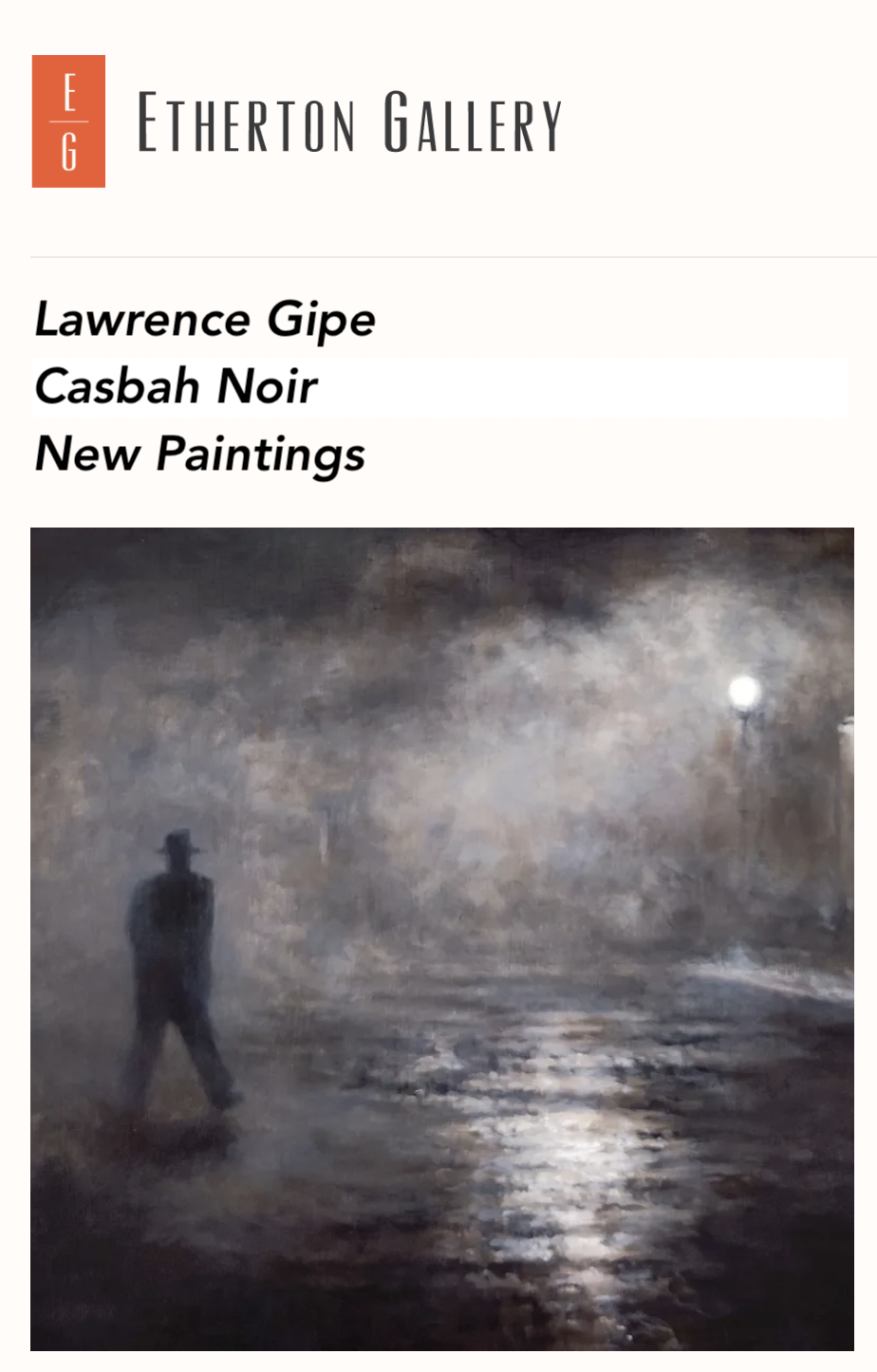
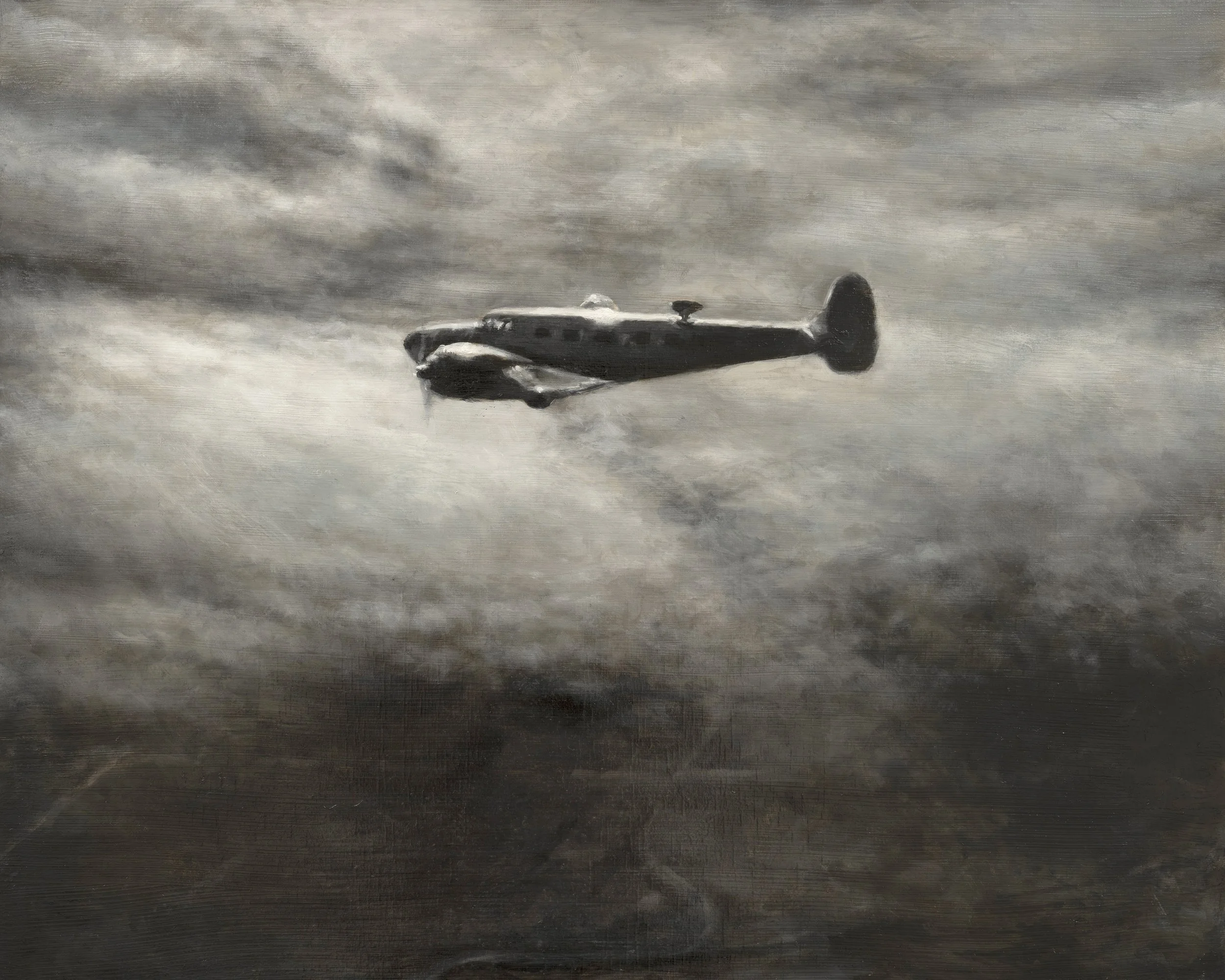
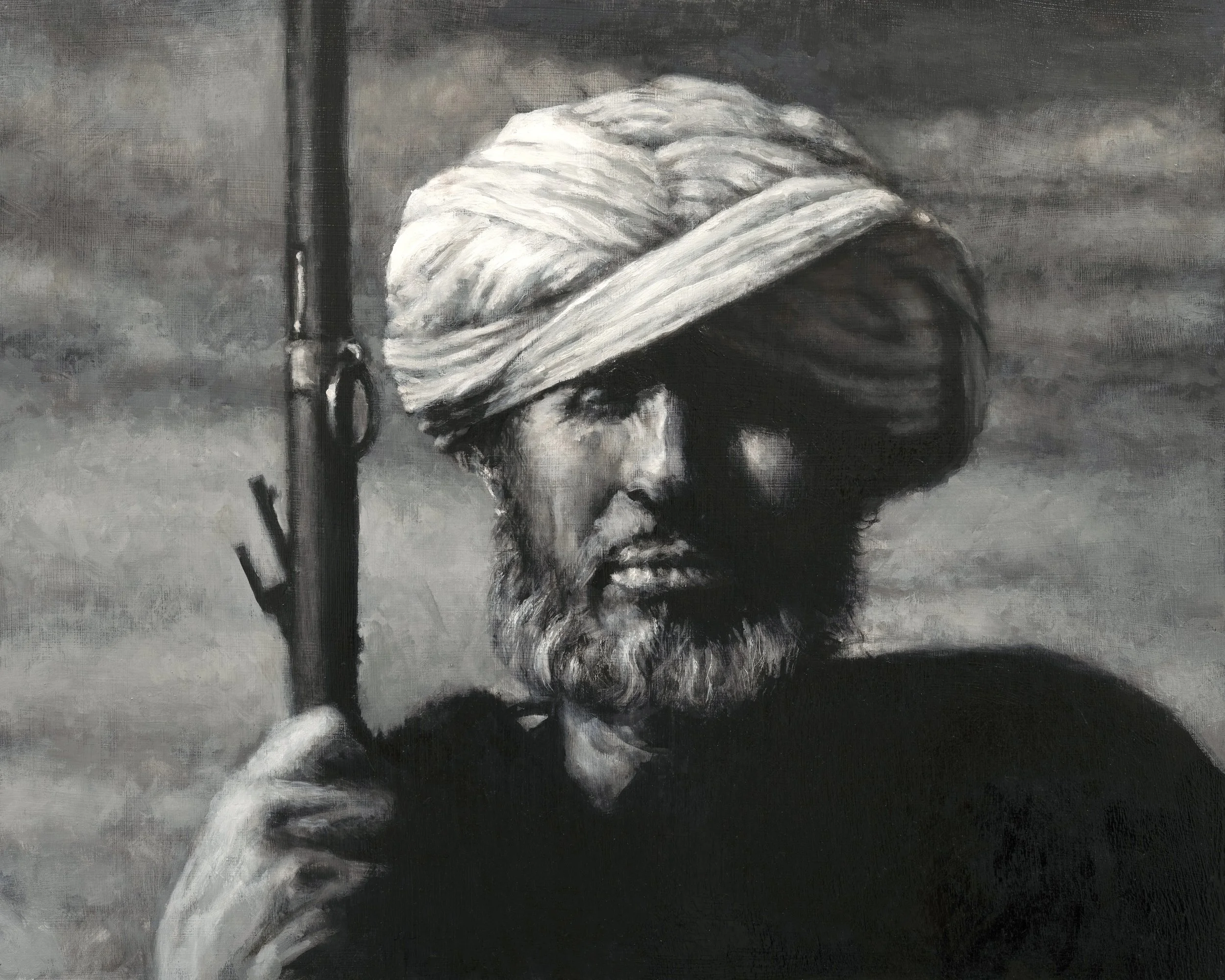
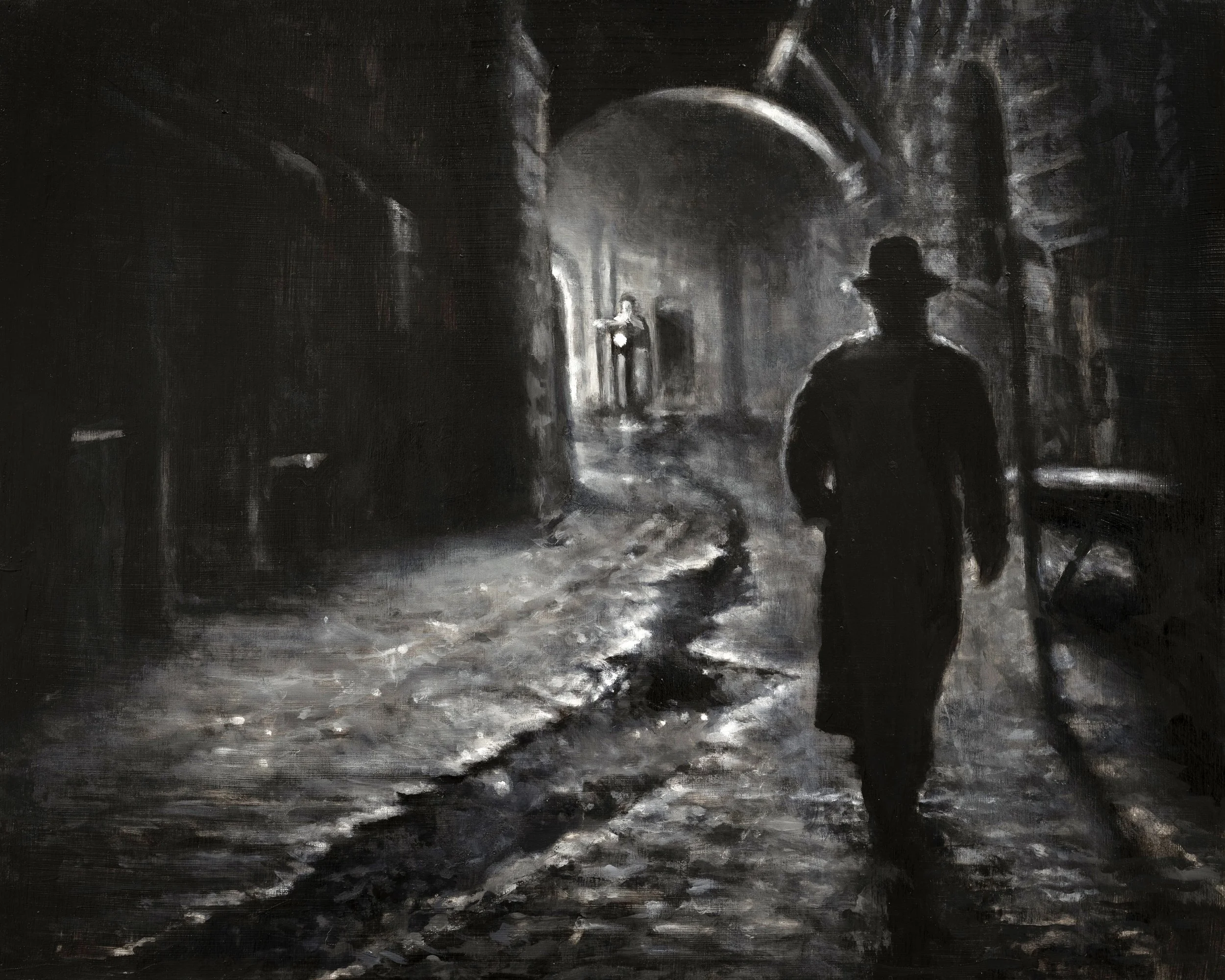


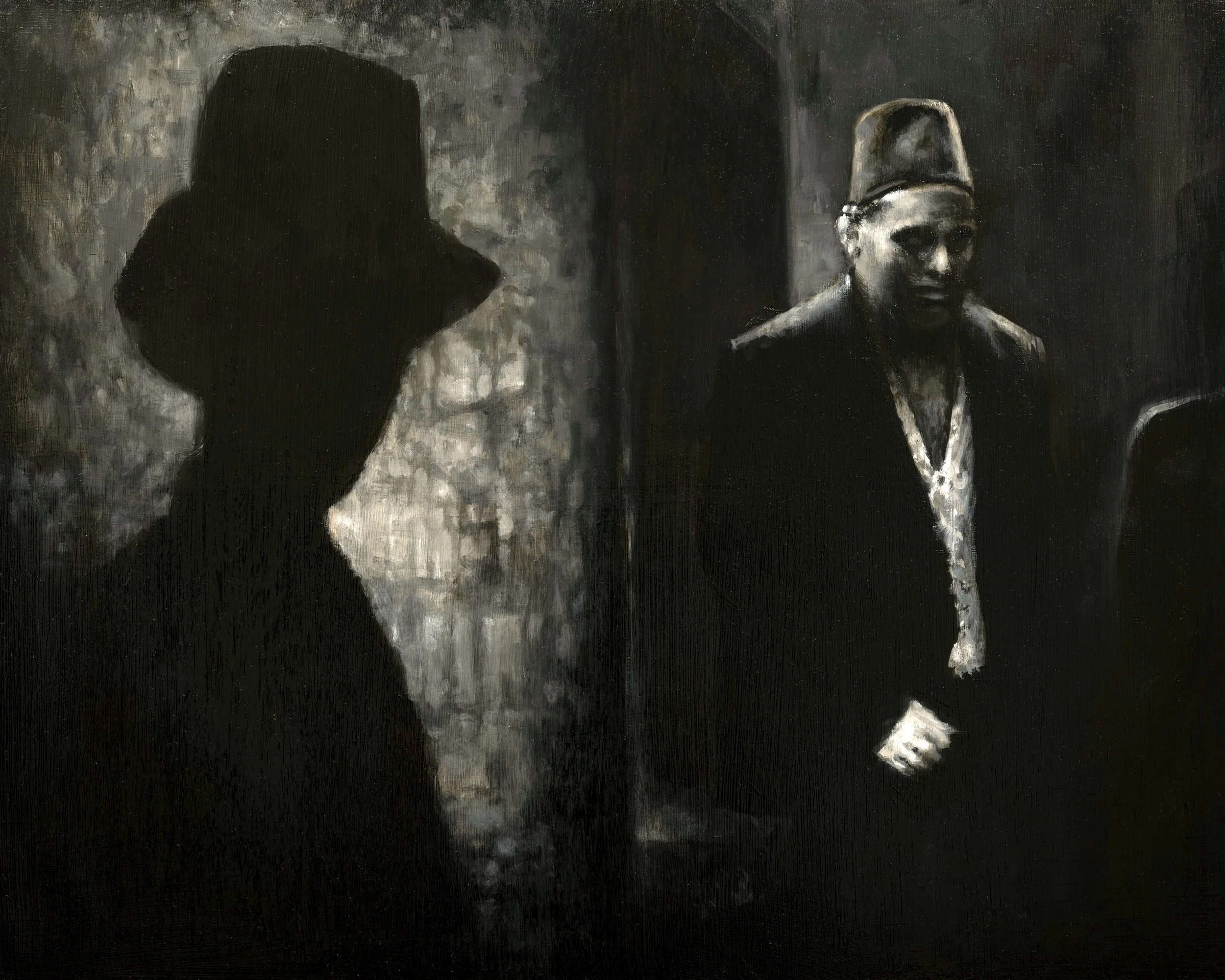
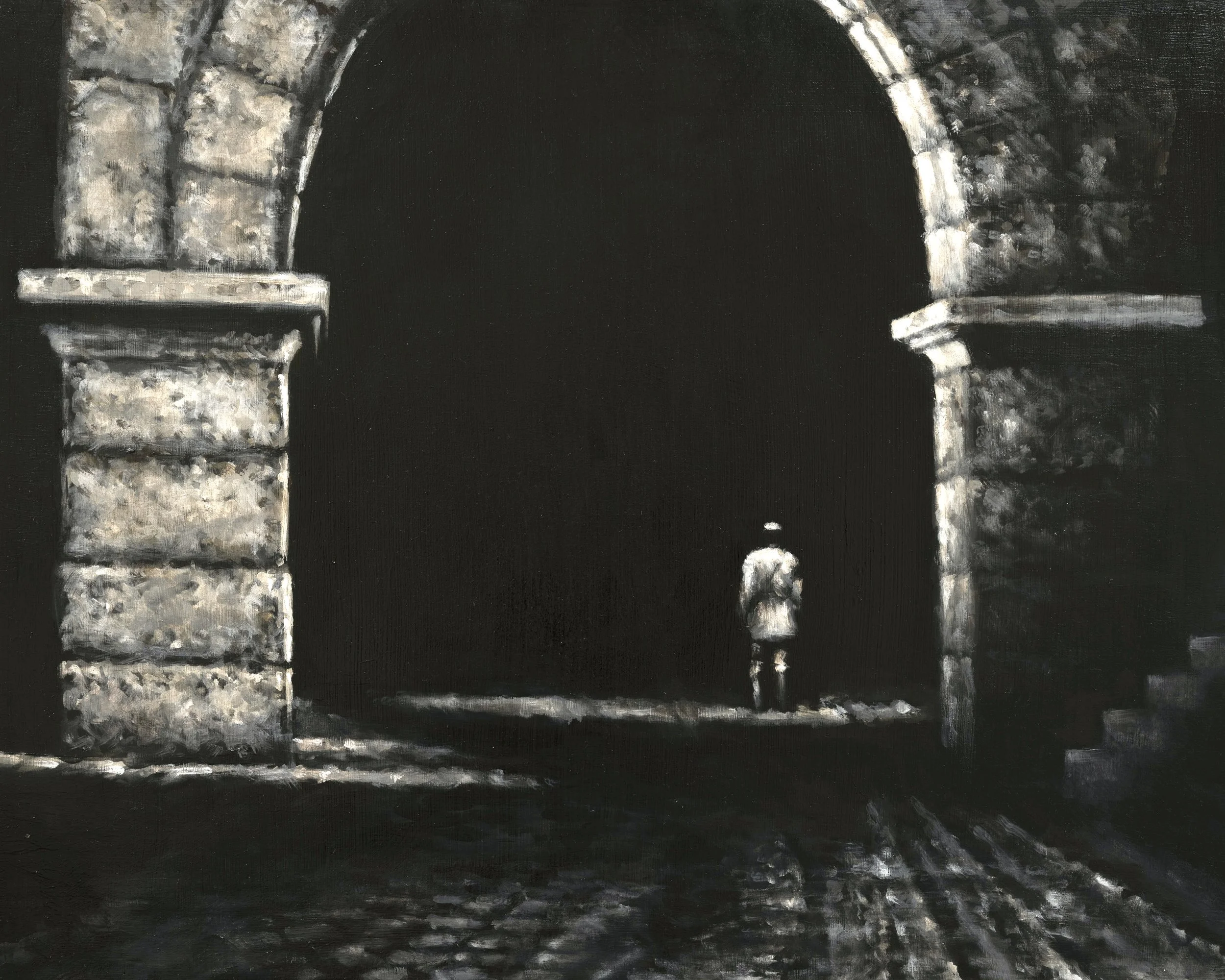



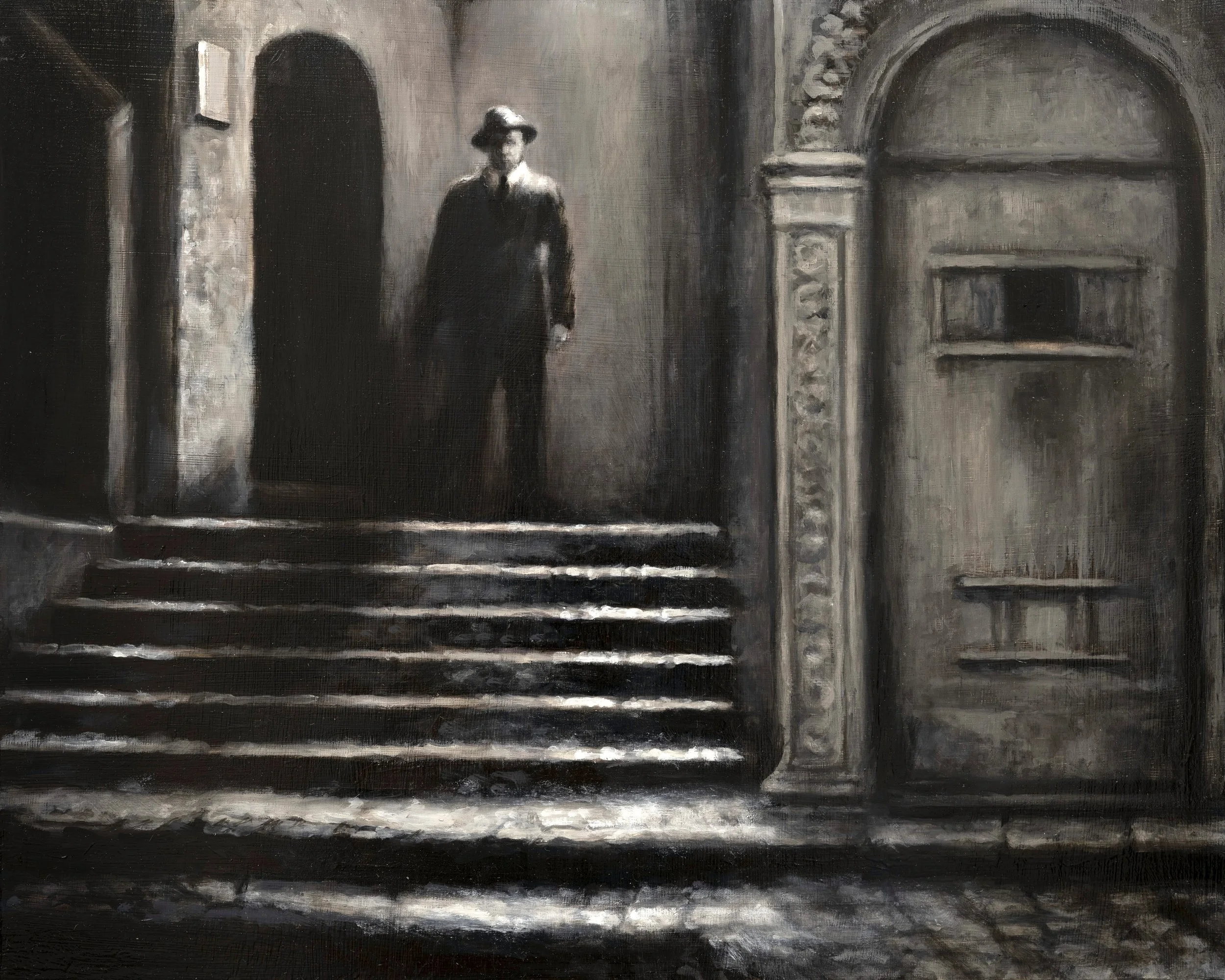
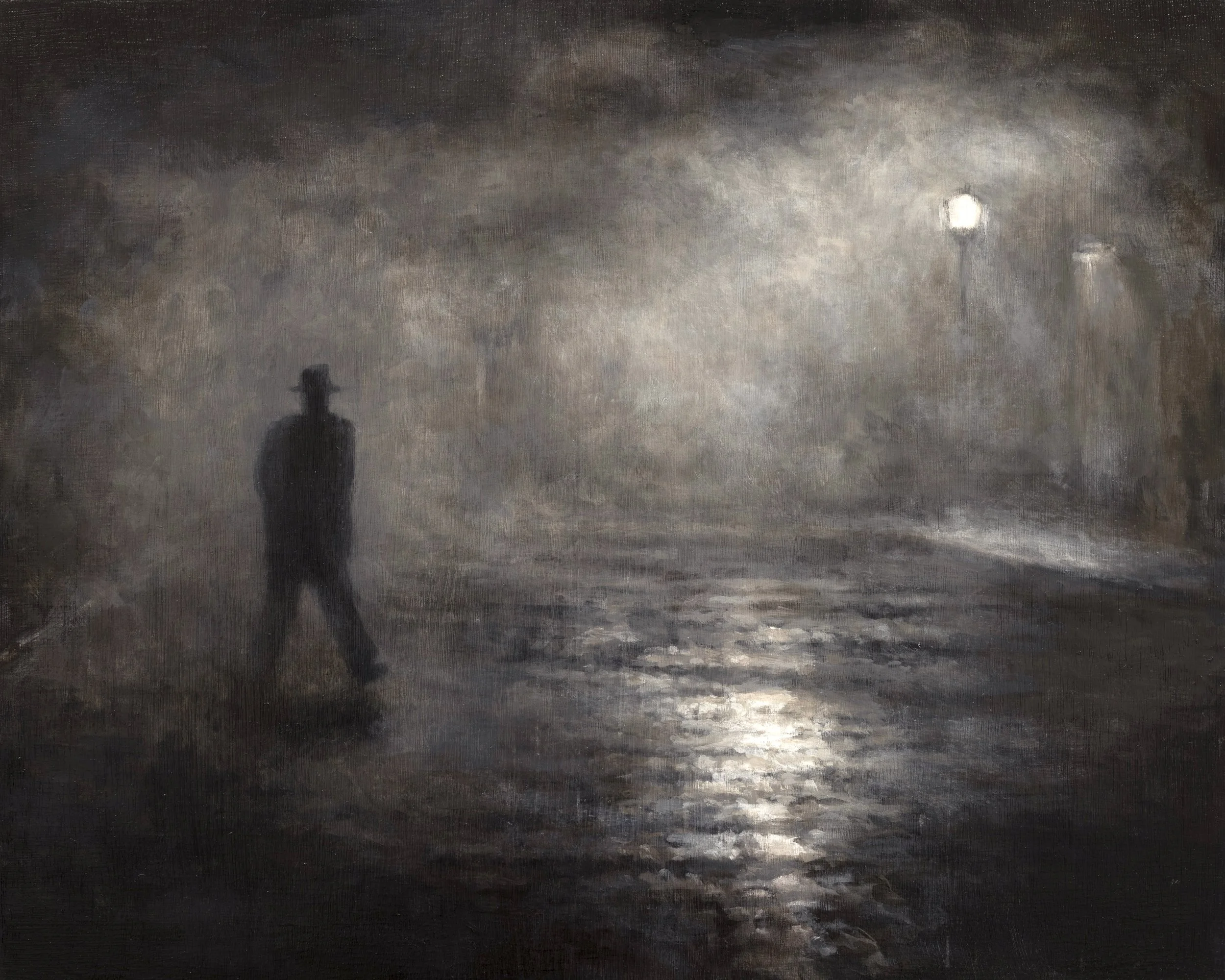
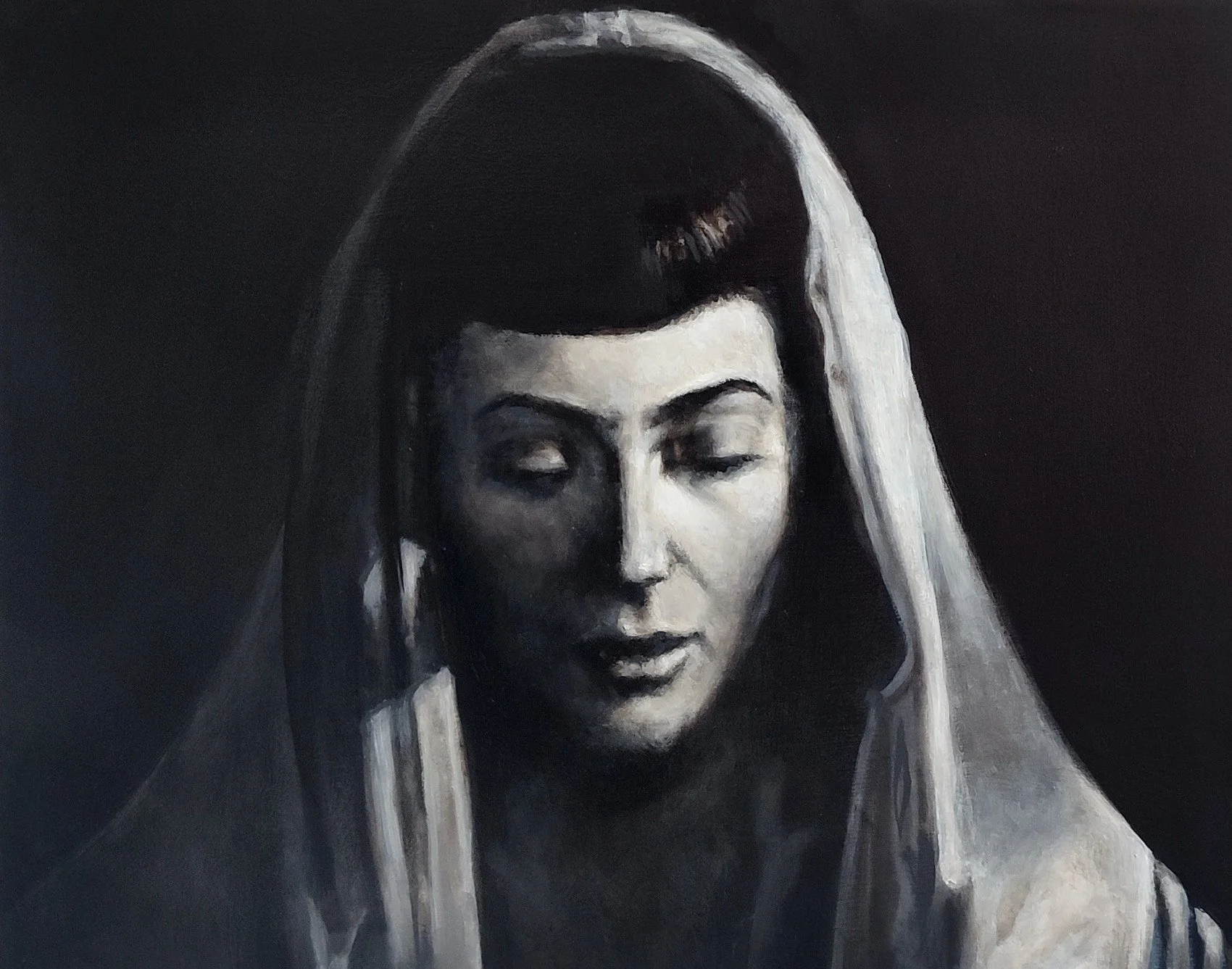
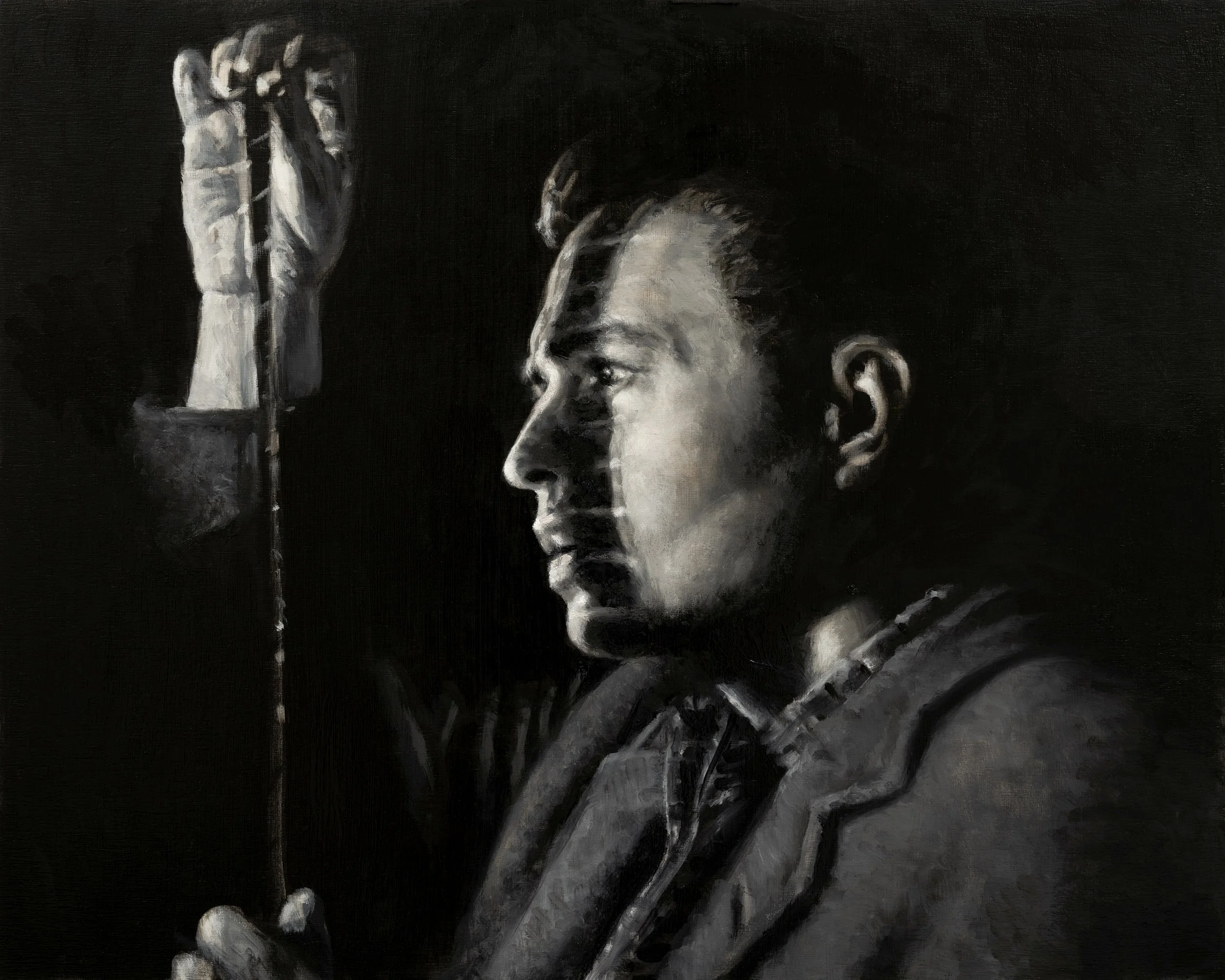
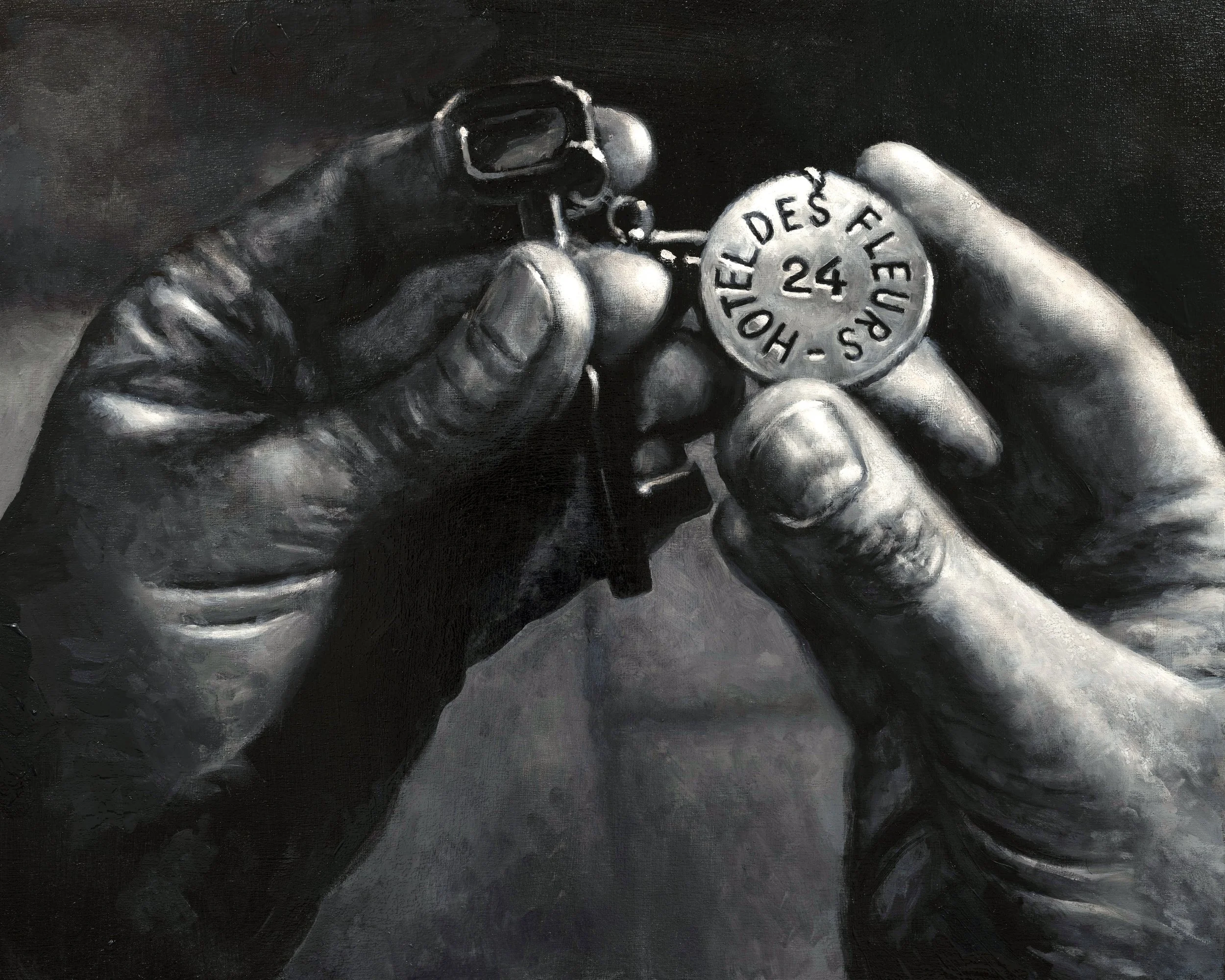

Works are oil on panel, 16" x 20", 2025
More Info: lawrencegipestudio@gmail.com / IG: lawrencegipe
“Casbah Noir” is a series of oil paintings derived from screenshots of film noir movies set in colonial locales such as Algiers and Cairo. Acting on the success of “Casablanca”, Hollywood created this post-WW2 genre (which I informally call “Casbah Noir”); here, a roster of Hollywood stars (Bogart, Raft, Lancaster) play characters of intrigue between the Colonial North African French and indigenous bureaucrats and rebels. The trope of the Westerner entangled in the other-hood of the “Casbah” was one of “exotic” representations communicated by this subgenre that dates from 1946 - 1954 (the year of Dien Bien Phu and a crucial year in the fight for Algerian independence).

In 1945, as recent victors of WW2, America was by all standards the major power - and media producer - on the planet. Post-war movies created/reinforced stereotypes of cultures that remain salient today, oft re-visited wistfully and nostalgically by the MAGA political spectrum. A typical example sourced for the series was, “Outpost in Morocco” (1948), which casts George Raft as a spy representing the French Foreign Legion, who in real-life cooperated and collaborated with the movie studio.
Above: Study No. 2 from Casbah Noir_2025_oil on panel_16" x 20"

One of the later Casbah noirs was “Fort Algiers”, partially filmed on location in North Africa. The work above: “Study No. 3 from Casbah Noir_2025_oil on panel_16" x 20", is derived from a screenshot of a momentary appearance of an uncredited background extra. Released in 1953, “Fort Algiers” was nearly a propaganda film for the maintenance of the French colonial order.

“Casablanca” (1942) is considered a predecessor to the genre, with its classic anti-hero Humphrey Bogart playing the character Rick. In the film, Rick symbolizes a non-interventionist America: “I stick my neck out for nobody”. By the film’s end - mirroring America itself in 1942 - Rick has seen enough, and will join the cause against the Axis. By 1946, the US position had changed from anxiety to interventionist triumph, and the new reality was reflected in this subgenre.
Above: Study No. 4 from Casbah Noir_2025_oil on panel_16" x 20"

In most cases, the American lead character’s storyline is backgrounded by the policing and military maintainance of France’s crumbling colonial empires. As France occupied Casbah-riddled sites such like Algiers, and presented Hollywood producers the opportunity to earn their cred by introducing international actresses to a post-war US public, although in “Outpost in Morocco” (1948), Utah-native Marie Windsor apparently is “exotic” enough to protray a daughter of an Emir of local Moroccan tribes.
Above: Study No. 5 from Casbah Noir_2025_oil on panel_16" x 20"

These works reference multiple screen captures from “The Man from Cairo”, as well as the template for Colonial -based Noir, “Algiers” (1941), and it’s musical remake, “Casbah” (1948). For instance, George Raft’s character in “The Man from Cairo” (1953) represents a new, confident American interloper, just as Rick represented an ambivalent American only 4 years earlier. His character mirrors the US’s willingness to take over as mediator, and later aggressor, in maintaining colonial status quo.
Above: Study No. 7 from Casbah Noir_2025_oil on panel_16" x 20"

Occasionally, as in the case of 1951’s “Sirocco”, the setting is placed in the recent past. Set in Damascus in 1925, “Sirooco” sees the French Army battling Syrian insurgents through the wizened eyes of Harry, played by Humphrey Bogart, in a complex update of his “Casablanca” persona. As history has it, the French colonialist government suppressed the rebellion with suficient bombs and brutality, so as a context, did it serve as a cautionary tale?
Side note: Said the NYT of “Sirocco”’s ambiance : "Except for a few moody moments in a plaster night-club, called the Moulin Rouge, and some shadowy shots of sloppy Syrians lying around in dingy catacombs, the scene is no more suggestive of Damascus than a Shriners' convention in New Orleans…”
Above: Study No. 10 from Casbah Noir_2025_oil on panel_16" x 20"